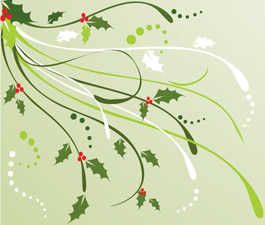home | north bay bohemian index | sonoma, napa, marin county restaurants | review

Clip-art Jag: Yes, this is terribly reminiscent of clip-art run last week, but would you really rather be looking at a block of cheese?
Wine and Cheese 101
Acid loves fat and other mysteries of the party-planning palate
By Denise Vivar
S uccessful wine and cheese pairing comes down to a slippery combination of science, art, luck and the personality and physiology of the taster. But party planners needn't freak, because the whole tradition is based on the fact that wine and cheese simply taste good together. That's because there are some common laws at work underneath it all.
Acid loves fat Acidic foods eaten with fatty foods make both taste better. Whether it's lemon butter, oil and vinegar, tomato and mayo or wine and cheese, when acid and fat converge and dance in your mouth, it rules.
Young wine loves cheese One of the main reasons cheese and wine go together is that cheese can help mask the taste of underaged wine. The astringent flavor characteristic of some young red wines comes from the tannins. Over time, tannins break down and mellow, becoming an important part of a wine's complex terroir. Because tannin breakdown can take time, many underaged wines have too many tannins for most palates. The fat in cheese protects your mouth from them.
Earth loves earth The Rule of Terroirism states that pairing a wine with a cheese from the same region will allow the respective terroirs to share the secrets of their home ground.
Acid loves acid Some people insist that cheese of high acid content, like goat cheeses, should be paired with wines of similarly high acidity, like Sauvignon Blanc. They might be hallucinating. (This is more professionally known as "the Flashback Rule.")
Bad wine loves cheese In research reported in New Scientist , trained wine tasters were presented with cheap and expensive versions of four different varietals. They evaluated the strength of various flavors and aromas in each wine—both alone and when preceded by eight different cheeses. They found that cheese suppressed berry and oak flavors, as well as sourness and astringency. Only certain "buttery" aromas were enhanced by cheese—possibly because cheese contains a molecule responsible for a buttery wine aroma.
Co-principal investigator of the study, UC Davis professor Hildegarde Heymann, suggests that proteins in the cheese may bind to flavor molecules in the wine, or that fat from the cheese may coat the mouth, deadening the tasters' perception of the wines' flavors. So even while the acid of the wine tastes generally good as it cuts through the fatty coating on your mouth, that same coating might prevent you from perceiving the wine's more subtle flavors. You could conceivably get the same pleasure from a lesser wine.
If that's the case—if the cheese raises even cheap wine to godlike status—better to spend your money on the cheese.
Of course, there are many who'd call Heymann's conclusions total balderdash. To find out where you stand, test yourself. Start with a good cheese, say a Saint-Nectaire, and pair it with some cheap Cabernet. Then eat the cheese with a good Bordeaux Cru Bourgeois. If you can taste the difference, then delving further into the realm of pairing would probably be worth your while. If you can't, then you probably know all you need to know about wine and cheese.
Send a letter to the editor about this story.
|
|
|
|
|
|